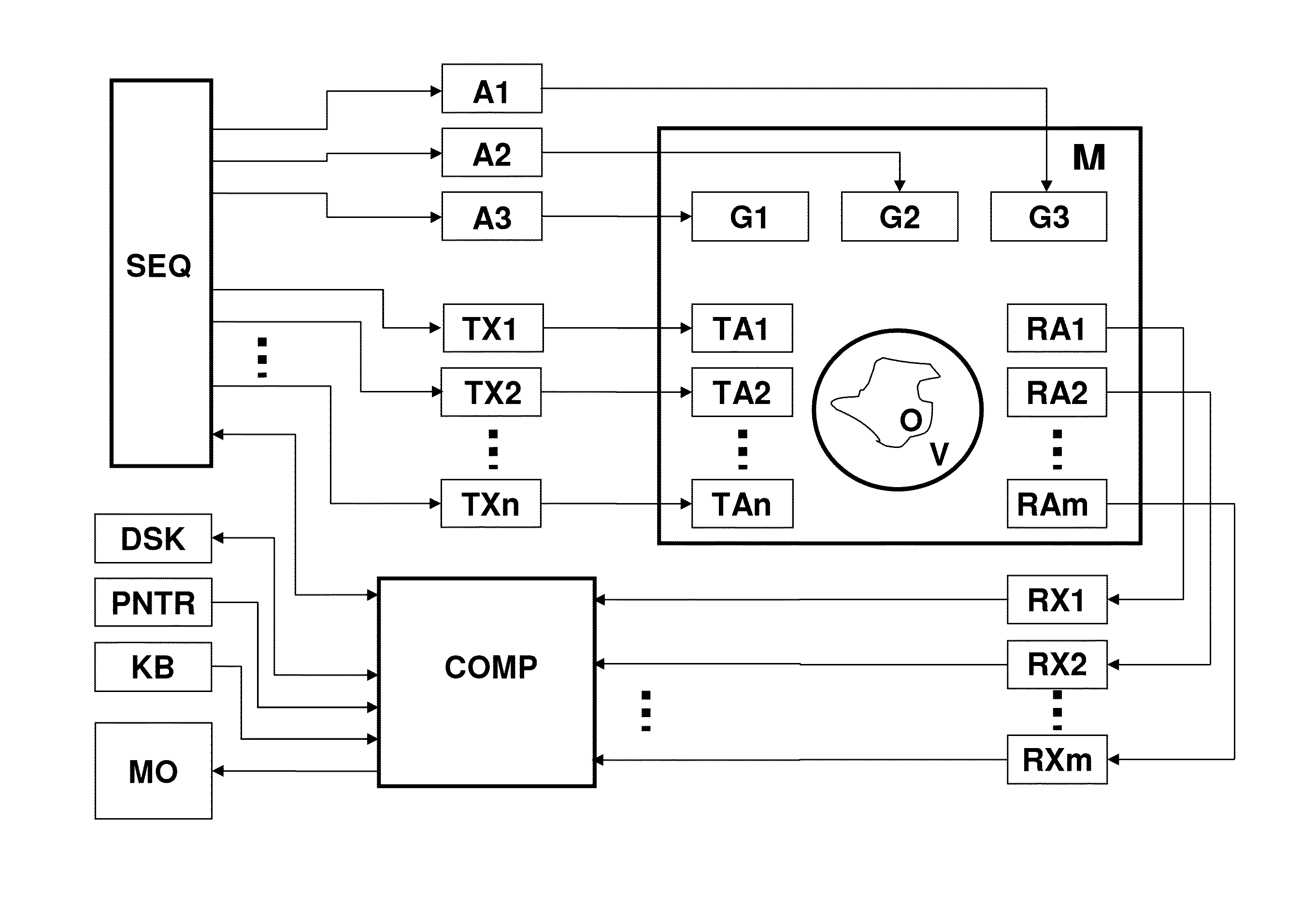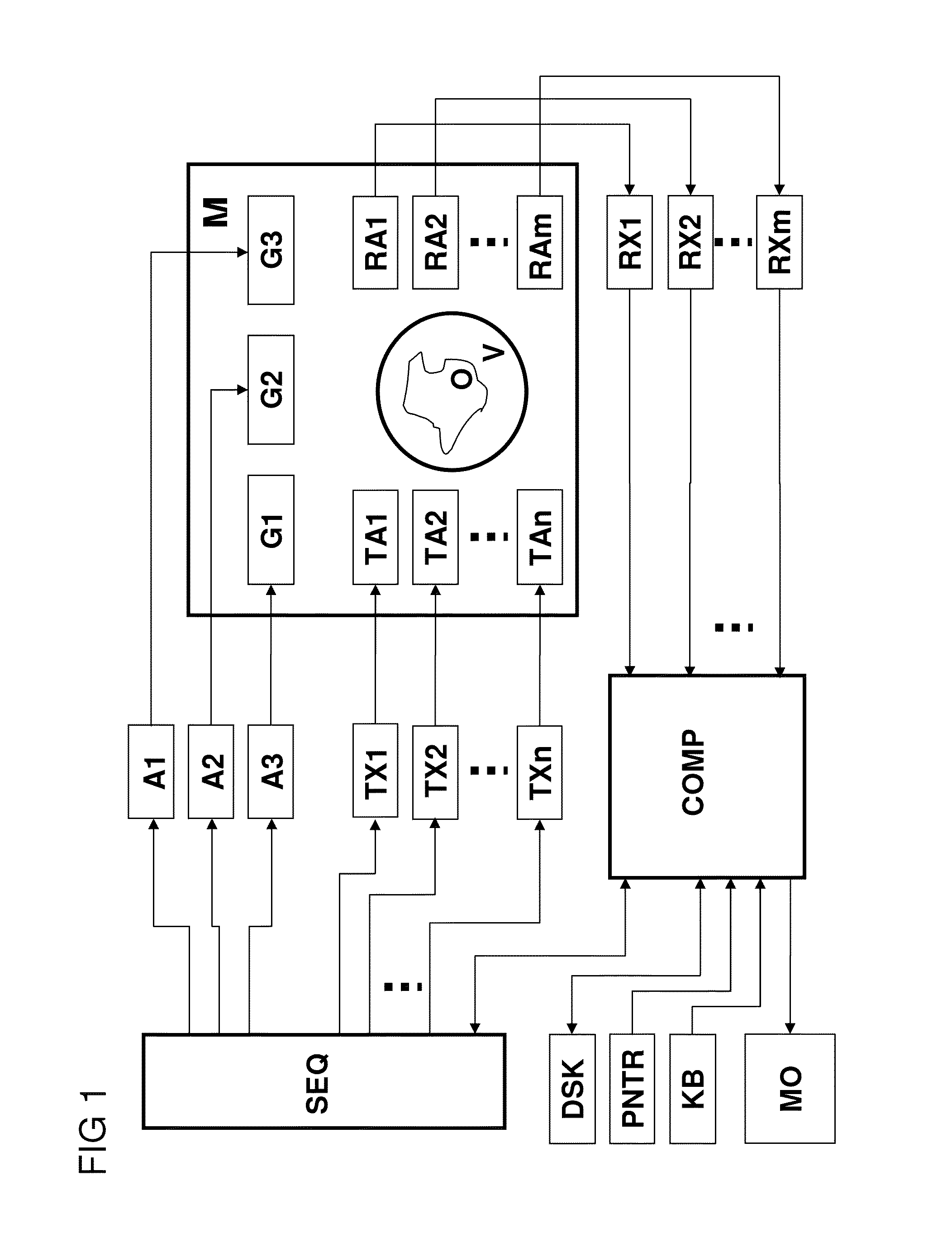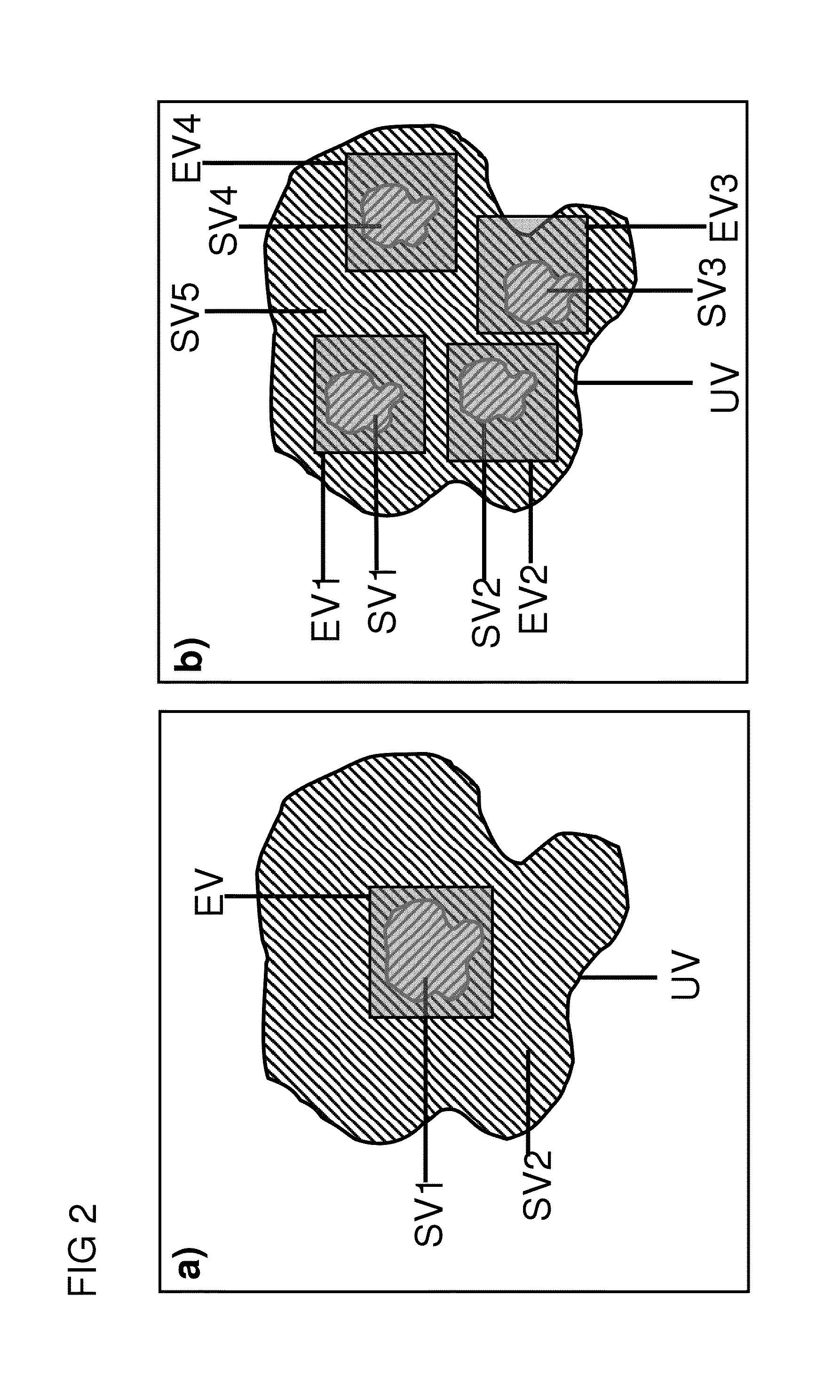Method for determining the spatial distribution of magnetic resonance signals in subvolumes of an object under examination
- Summary
- Abstract
- Description
- Claims
- Application Information
AI Technical Summary
Benefits of technology
Problems solved by technology
Method used
Image
Examples
Embodiment Construction
[0042]Further variants and further advantageous characteristics and embodiments are described in the dependent claims.
[0043]In a variant of the inventive method, the transmission encoding scheme only defines the spatially dependently amplitude of the transverse magnetization to be set by means of the magnetization change across the I transmission encoding steps. Encoding according to the transmission encoding scheme therefore comprises amplitude encoding by varying the amplitudes of transverse magnetization across the I encoding steps. One possible variant for such an amplitude encoding for N subvolumes would be to set an amplitude A1 of transverse magnetization in a different subvolume in each encoding step of the transmission coding scheme and to set an amplitude A2 that differs from A1 in the remaining subvolumes.
[0044]An alternate variant is especially preferred, in which the transmission encoding scheme only defines the phase of the transverse magnetization to be set spatially ...
PUM
 Login to View More
Login to View More Abstract
Description
Claims
Application Information
 Login to View More
Login to View More - R&D
- Intellectual Property
- Life Sciences
- Materials
- Tech Scout
- Unparalleled Data Quality
- Higher Quality Content
- 60% Fewer Hallucinations
Browse by: Latest US Patents, China's latest patents, Technical Efficacy Thesaurus, Application Domain, Technology Topic, Popular Technical Reports.
© 2025 PatSnap. All rights reserved.Legal|Privacy policy|Modern Slavery Act Transparency Statement|Sitemap|About US| Contact US: help@patsnap.com



